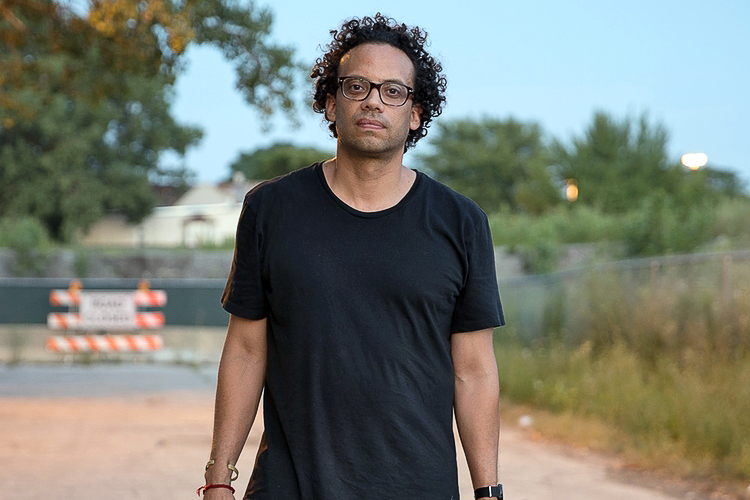Up next in our series of interviews with notable, in-the-know locals: Carlos Javier Ortiz, who screens a portion of his film Shikaawkwa at Pop-Up Magazine this Saturday.
What can you tell me about Shikaawkwa?
It’s a split-screen projection that I edited for Pop-Up, a kind of meditation piece between landscape and people. It follows this young man Ondelee Perteet, who’s from Chicago. He was shot and paralyzed and his mother documented his recovery. The film is a meditation of two things: him recovering and then my footage of current events in South Side neighborhoods.
How did the film come about?
I’ve known Ondelee for maybe seven years. I met him two or three years after he was paralyzed. His mother started recording his recovery with a camcorder. One day she just gave the footage to me to watch. I was really blown away when I watched it. I was like, Holy fuck. That was my first reaction. I knew I wanted to make something from it. The film is partly about what happens to a young person who’s able to move and then all of a sudden can’t. It’s showing the fragility of the young body, but also the flexibility of it because he’s since recovered a lot. He’s become really able-bodied.
What’s the idea behind the footage of South Side neighborhoods?
Most people’s idea of the South Side is so negative. But the South Side is so big and different and beautiful. I wanted show that. One of my favorite scenes cuts back forth between Ondelee and these kids from the South Shore Drill Team practicing in this big Englewood landscape. The train’s coming by, these kids are practicing, the landscape is quiet, and you see these kids transform into beautiful athletes and dancers.
Your other work has covered Black Lives Matter and the Great Migration. Do those issues come up in this film?
A lot of my work is dealing with issues of policing and community, trying to address the contemporary manifestations of these long-term problems. A lot of the people I’m documenting are going out to protests, fighting for better neighborhoods, and fighting for better schools. But that’s not the message that gets out. I’m trying to show that in my work: parents coming out to protests, community leaders like Father Michael Pfleger walking the streets. The end of this film cuts between Ondelee and a Black Lives Matter protest. At this point, Ondelee is in a different place in life and a little bit older, so I think the two images complement each other.
Why juxtapose those scenes with Ondelee?
Ondelee’s life was transformed when he was paralyzed. Imagine life in a wheel chair, and then imagine life as a teenager and the life taking place around you—I’m playing with those ideas. I wanted to show Ondelee’s life in parallel to these other places and people. And I wanted to make something about the minutia of life—the little things that keep it cranking. It’s also a celebration of life and beauty.
Tell me about Pop-Up Magazine in general.
It’s taking a magazine that you love into a concert hall and opening it up to live performance, from journalists to filmmakers, to cartoonists and poets. It has a little bit of everything in it. It’s also being performed with an orchestra, the Magik*Magik Orchestra. I’m excited to see the other performances.




